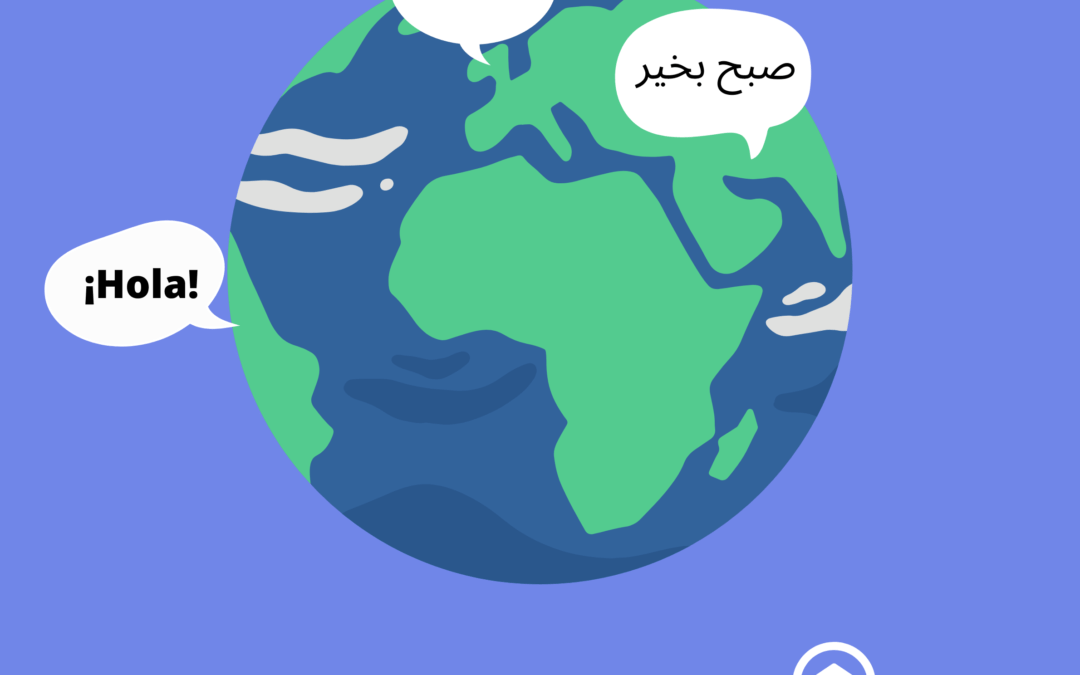
Sep 18, 2023 | Artificial Intelligence, Blog, Communication, English language, Language Services, Language Varieties, Translation
Balancing Creativity and Cultural Relevance Have you ever been lost in translation? A recurring mistake to make is to assume that translation is limited to mere linguistic conversion, that is swapping a word for another word. The reality, however, is that translators go above and beyond to be able to capture and convey messages accurately in different languages and cultures. Not an easy feat, by any means, as striking the right balance between creativity and cultural relevance is exceptionally challenging. Creativity plays a radical role in translation, especially so when conveying idioms, metaphors, and cultural nuances with no direct equivalents in other languages. These situations call to the creative skills of translators to concoct inventive solutions to preserve the impact and goal of the source text while ensuring the transfer in language maintains clarity and understanding in the target language. A successful translation is a culturally relevant one. Where a deep understanding of cultural norms, customs and values shine through in both the source and target language. The translator needs to ensure that the translated content is appropriate and relatable to the targeted audience. They take into account historical, social, and linguistic nuances that can potentially harm the message intended. Transcreation: Avoid getting lost in translation The perfect blend of translation, creation and cultural relevance is transcreation. Transcreators have the flexibility to deviate from the literal translation, original structure, and limited creativity. They can focus on recreating and restructuring the words around the message, goal and emotion of a product or service. They incorporate humour, wordplay, and other culturally relevant elements, eliminating the possibility of a-lost-in-translation problem. Striking the...

Aug 21, 2023 | Blog, Language Services, Worldwide
Translation localization involves translators adapting a translated text to the requirements of a specific geographical area. They adjust the content to make it sound familiar and easily understood by the target audience. Localization can include elements such as cultural references, illustrative colours and images, local dialects, adaptations of dates, times, or currencies, and units of measurement, as well as local information. For high-quality localization, localization translators must have specialized skills compared to general translators. They need to have an in-depth knowledge of the culture, idiom, and lifestyle of the people from the source and target area. Ideally, native speakers of the target language should carry out the translation, but it is also essential to choose translators with specific knowledge of the target region or dialect. Therefore, companies looking to expand into new markets find localization particularly beneficial. It enables them to reflect the local culture, translate content into the local dialect, personalize their product or service, adapt promotions and events to the national holidays of the target country, and comply with local regulations where necessary. Certain types of translation require more localization than others, depending on their specific nature and the need for cultural, linguistic, and technical adaptation. Here are a few examples of types of translation that often require extensive localization: Website localization Websites often contain region or country-specific content, such as information about local services, promotions, cultural references, and news. Localization is crucial to ensure that the website is tailored to the language, culture, and local preferences of the users. Software and application localization Localization of software and applications involves adapting the user interfaces, menus, error messages,...

Jul 23, 2023 | Blog, Tips for Translators, Translation
Translation is a complex and vital process. It requires a deep understanding of the source and target languages in the cultural context they are being used. Working with professional translators can help businesses and organizations communicate effectively with their target audiences. Every language has its own set of linguistic and cultural nuances that must be considered during the translation process. While it can be tempting to address your translation needs with an acquaintance, a friend or a native speaker of the target language, professional translators spend several years training for their trade for a reason. Of course, being a passionate linguist is a must, but it’s not enough! Here are six of the most important attributes of a professional translator: 1. Working with professional translators fluent in the languages they work in When translating languages, choosing a professional translator who is fluent in both languages is extremely important. The translator should have an in-depth understanding of the cultural and linguistic nuances of both languages. They should also be able to translate the text accurately while staying true to the original meaning. 2. Hiring a professional translator ensures that your target audience comes first One of the first steps in translating from one language to another is research. Thoroughly researching the target audience and their target cultural relevance is crucial. This will help ensure that the translation accurately conveys the intended meaning and message of your text. For example, the terminologies and expressions used in legal documents will be different from those used in marketing campaigns. Similarly, those used in children’s resources will be very different from those used in...

Jun 26, 2023 | Blog, Interviews, Language Services, Projects, Tips for Translators
A translation project manager deals with many parties, including translators, editors, proofreaders, and clients. Their task is to hold it all together. The importance of effective translation project management lies in its ability to foster seamless coordination between these different individuals or teams, ensuring their alignment and focus on the project’s objectives. Translation project managers manage logistics, timelines, and communications. Therefore they facilitate efficient collaboration while mitigating the risks associated with miscommunication or delays. Working in translation project management: An interview with the CEO of LingoStar, Lenka de Graafova We recently interviewed Lenka de Graafova, M.A., CEO and Managing Director of LingoStar Language Services Inc. Lenka has a deep passion for world cultures and languages. Together with her team of multilingual translators and project managers, she manages foreign language projects for Canadian clients. Lenka talks about her experience in providing translation services in Canada and explains how to manage a high volume of multilingual translation projects. How and why did you create LingoStar? [Start of interview] I’ve got a translation background and I’ve worked in a translation company in London, UK. Before that, I lived in the Netherlands and had the experience of being a translator and interpreter of Czech and Dutch. Then I worked in London as a translation project manager, where I experienced the project management aspect of the job and learned how to negotiate with clients, contract translators, and manage projects in many languages. At the time, I thought it was an interesting development to grow from a translator to a project manager. When I moved to Canada in 2004 and started looking for a language-related...

May 28, 2023 | Blog, Language Services, Projects, Translation
What is project management and how does it relate to translation? Project management in translation is the automation of the work process, i.e. the removal of so-called manual tasks that can be repetitive and tedious. It allows the translation agency to manage several projects at once – which requires a great deal of organization – and to have better control over ongoing projects. It also facilitates the creation of real collaboration within teams. The aim of project management is therefore efficiency. Among its many benefits, it allows the company to centralize its linguistic resources and thus ensuring consistency between the various translations. Project management is the link between the organization’s goals and objectives and its projects. In other words, it ensures that the original budget is not exceeded and that the project is completed on time. There are seven parts to corporate project management: 1) Risk Study: Identify and assess the potential risks of the project 2) Project Estimation: Calculate project costs, resources, and time 3) Project Reviews: Monitor the progress of the current project portfolio 4) Project Management Training: Share and interact with project managers 5) Escalated Issue Management: Being aware of urgent issues 6) Time Tracking: Develop a time-tracking system 7) Information System: Create a management platform shared with the team You can read more about general project management here >>. Why use an agency for project management in translation? Working with either translation agencies or freelance translators has its advantages and disadvantages, and the choice between one or the other will depend on your specific translation needs. However, here are our top 5 reasons why you should...

Apr 26, 2023 | Artificial Intelligence, Blog, Communication, Translation, Worldwide
Applications of artificial intelligence The concept of Artificial Intelligence (AI) is becoming increasingly common in our everyday lives. But what does artificial intelligence mean? According to the Oxford Advanced Learner’s Dictionary, artificial intelligence is “the study and development of computer systems that can copy intelligent human behaviour”. Some specific applications of artificial intelligence include natural language processing and speech recognition. Nowadays, we use AI systems to write articles or even translations. These “automatic” solutions are gaining many allies. Unsurprisingly, language industry professionals are beginning to question the reliability of these growing systems. Recent developments in applications of artificial intelligence Applications of artificial intelligence have grown so dramatically in recent years that it is almost impossible to keep up with the changes. Ten years ago, for example, no one could have imagined self-driving cars. But now, they are more reality than fantasy. Another example of a new AI system is the smart vacuum cleaner. This vacuum cleaner can scan a room, identify obstacles that may stand in its way, and clean the whole room in a matter of minutes. What’s more, it doesn’t need any human help to clean. Amazing, isn’t it? Artificial intelligence technologies are developing rapidly because they can process huge amounts of data much faster than humans can, and even make more accurate predictions. Applications of artificial intelligence in language programmes However, not all developments are related to physical robots. Chatbots are on almost every website to help customers if they need any kind of assistance. By simply accessing a website, a chat will pop up and you will be able to ask any question, which artificial...






















